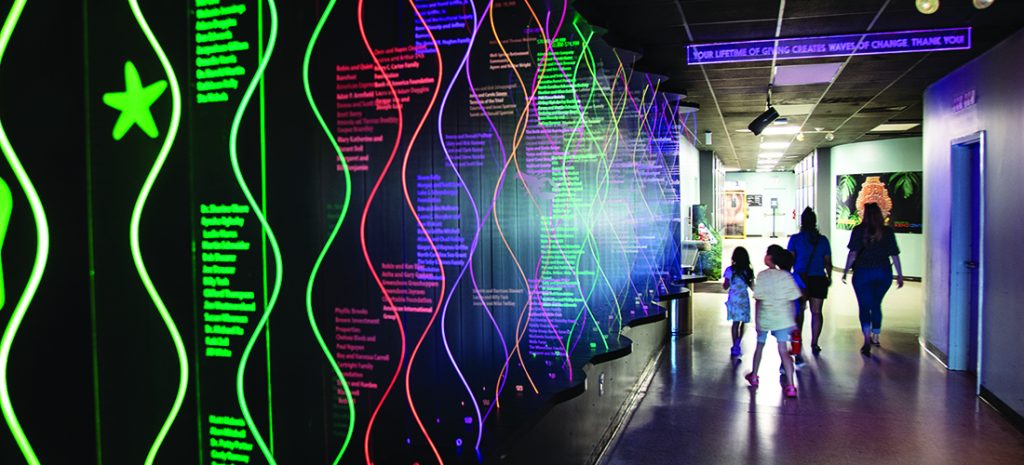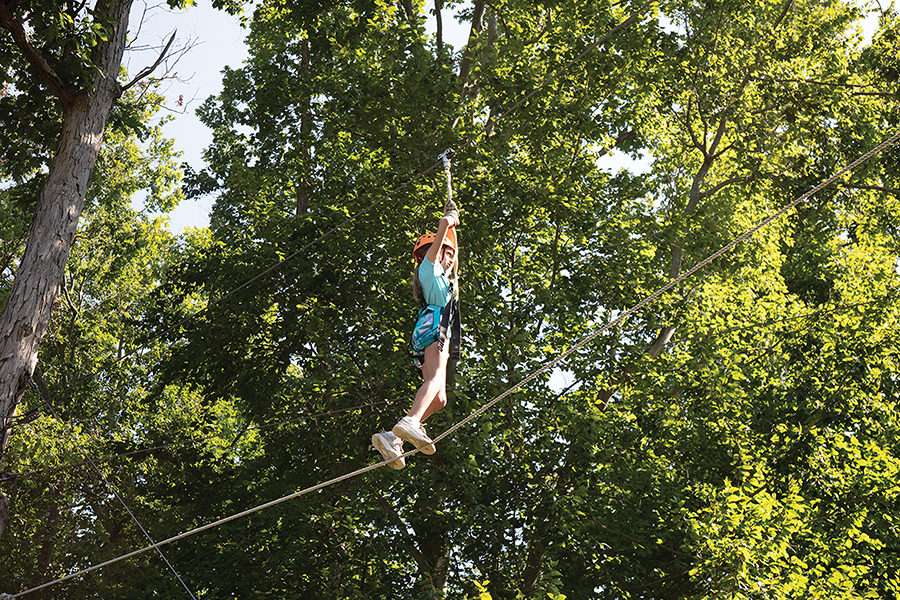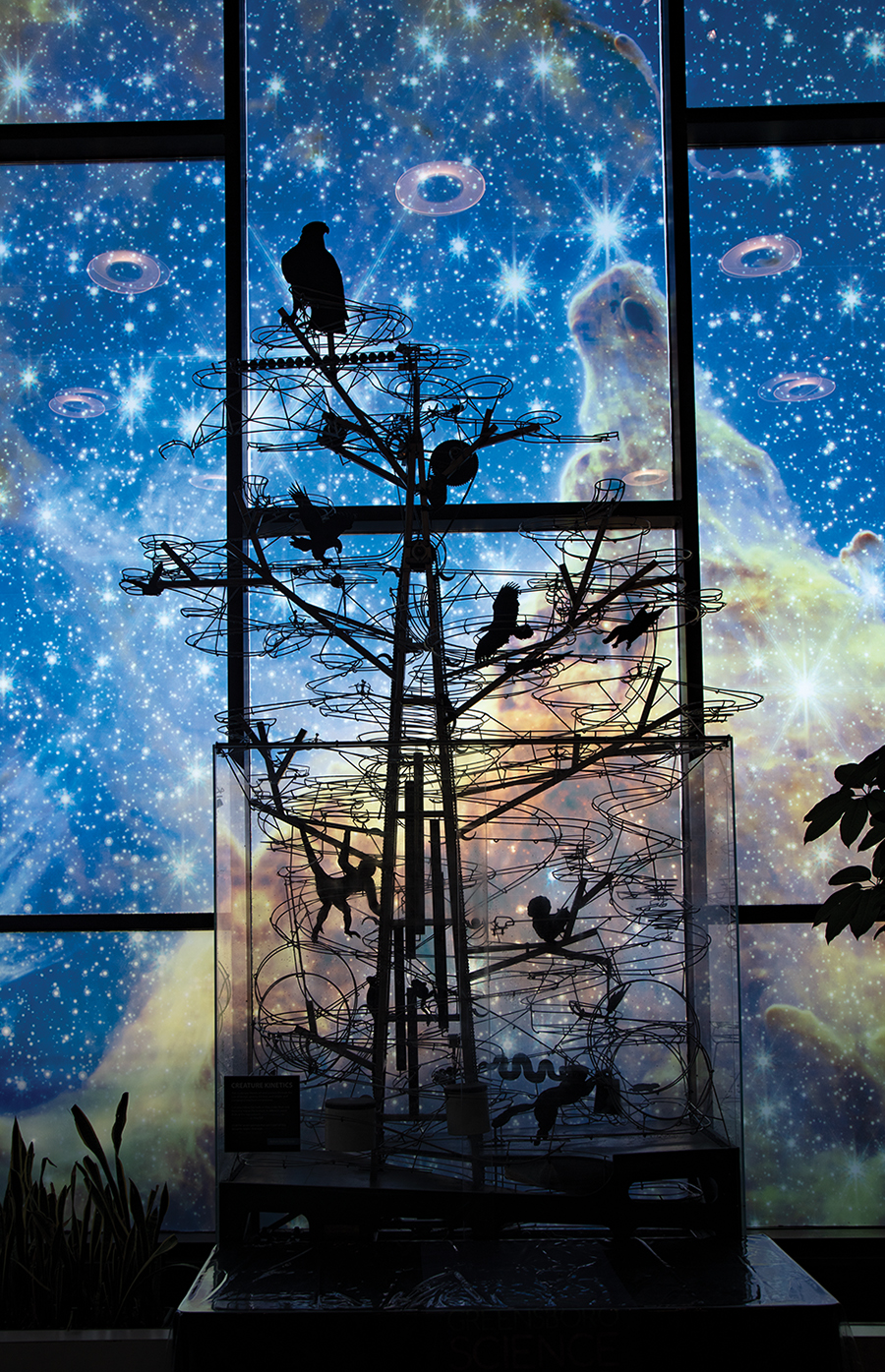The Wonder Kid

The secret to Glenn Dobrogosz’ success? Seeing through the eyes of a child
By Cassie Bustamante Photographs by Mark Wagoner

In the fall of 1996, after hopscotching across the country chasing zoo careers, Glenn and Tonya Dobrogosz found themselves on the road again, destined for a place that would change their lives forever. The couple was headed to New York State Living Museum at Thompson Park (now Zoo New York) in Watertown, where Glenn would take on his very first directorship role. The day they arrived for his interview, tears rolled down Tonya’s cheeks.
“I’m from Florida!” exclaims Tonya. “And it was as far north as you could go and still be in the United States.”
Glenn, CEO of the Greensboro Science Center, was ready for an opportunity where he could make a real impact and, in his words, Watertown’s zoo was in “rough shape.” Challenge accepted.
His first day in the “office,” he discovered his desk was made from a door on cinderblocks, and the crammed space was shared with two coworkers as well as “a possum that had chronic diarrhea . . . I was humbled pretty quick that day.”
While Glenn worked to greatly improve the Watertown zoo in his six years there, “most importantly, year one . . . Hannah was born.”
Hannah, 25 and the Dobrogoszes’ only child, now lives in a New York City apartment and writes for the popular website, BuzzFeed. She says that whenever she tells people that she grew up living in zoos, they inevitably point out that she lives in New York City: “That’s like a zoo, too,” they joke.
“A dangerous one,” interjects Glenn, who, by the way, considers most snakes “harmless.”
In 2022, Hannah wrote a BuzzFeed piece about her experience of growing up in zoos (buzzfeed.com/hannahdobro/i-lived-in-two-zoos), sharing that although her birth was “in a human hospital like many other human babies,” her next five years were spent living in an old 1918 limestone-block house, smack dab in the middle of the zoo campus. As perk of Glenn’s job, the family resided in the zookeeper’s house, though it came with noisy neighbors — a great horned owl named Big Bird who hooted constantly — and spirited residents.
“Let’s put it this way,” says Glenn, “we had weird experiences.”
“It was very haunted, most definitely,” Tonya chimes in. “I used to hear music all the time, playing a violin.” They later discovered that a gentleman who had lived there — and was now deceased — played the violin. The music echoed from what had once been his room.
With animals — and other-worldlies — aplenty, human neighbors were scarce. “Fortunately Glenn had two coworkers, two girls who worked in his office. We all were pregnant about the same time,” says Tonya. “And we became friends.” Out of this friendship, a “mommies group” was formed that helped both Tonya and Hannah find community.
The social scene wasn’t exactly thriving, but living on the zoo campus provided copious opportunities for family time.
“She used to look out the window in the living room and sit up on the couch and she would sometimes see him out walking around,” says Tonya. “And she’d be knocking!”
And Glenn also came home regularly for lunch with the family. “These were extremely busy times, because when you’re just starting out, you do whatever it takes to succeed. And it was very intense, very stressful because I didn’t know we could do it.” But, he says, “having that ability to come home, give her a hug, walk — that was huge for my mental condition.”
Also just outside the window of their New York zoo home sat a butterfly house, which Hannah, who still considers butterflies among her favorite animals, frequented. That structure, says Glenn, “was the motivation for why we built the butterfly house at the [Greensboro] Science Center.” More so than the building itself, it was seeing Hannah interact with it “because watching her in that space, from the chrysalis to the caterpillar to the butterflies — it was pretty special.” Even today, he says, though “it sounds immature and silly,” he designs “through the eyes of an 8-year-old child.”
His daughter’s fascination with the animal world mirrored his own. Growing up in Raleigh, Glenn recalls that while other kids were playing sports, he was wading knee-deep in a creek that ran, quite literally, through his backyard and “turning over rocks for salamanders and frogs.”


After-hours walks around the zoo are favorite memories among all the Dobrogoszes. “I remember specifically we would go into the gift shop, we would go into the ice cream machine and I would get a drumstick, still my favorite ice cream,” says Hannah, adding that they’d then walk around the zoo together as the sun set. “It’s a child’s dream, really.”
“For me, it really is just taking her little hand in New York and walking that path and we’d mimic the animals,” recalls Glenn of those special evenings together.
While Watertown provided the family with obvious challenges, it provided Glenn the opportunity to see just what he was capable of doing. In fact, “I kinda wrapped my arms around the project and wrote a master plan called Thompson Park 2000 and just presented, presented, presented,” says Glenn, to “whoever would listen.”
His tenacity paid off. “We ended up raising about $3.5 million.” What really helped, Glenn says, was that “there was an army base up there and [we] met a colonel who just loved us and helped clear land, build roads — all free of charge for donuts and pop.” Under Glenn’s six-year directorship, New York State Living Museum became fully accredited, with several new exhibits, landing the spot of number one tourist destination for Watertown.
After successfully transforming the Watertown zoo, the family headed to the Chehaw Zoo in Albany, Georgia. There, Glenn spent a short two-year stint getting it accredited, and then happened to see a job listing for the Greensboro Science Center.
Happy to be closer to his own parents in Raleigh, Glenn and his family made the move to Greensboro in 2004. While this was the first time they didn’t have a campus dwelling, Hannah still recalls special moments involving her dad’s work. “He’d bring animals [to school] and we’d go on field trips to the science center,” she says, adding that, with Glenn as her father, it was “a really special field trip.”
But Glenn has worked to make the science center special for kids — and adults — from all walks of life. In his 19 years in Greensboro, supported by “a team and board that are the best I’ve had,” he’s added SkyWild, the Kiwanis Treehouse and Revolution Ridge. To see the faces of children enjoying new additions at the Greensboro Science Center, it’s clear that it was planned by people who understand what it is to look through their eyes.

One of the recent changes Glenn is proudest of allows accessibility to kids from all socioeconomic backgrounds. The Greensboro Science Center now admits those who show their SNAP (Supplemental Nutrition Assistance Program) cards for just $5, compared to a regular admission fee of $19.50. “I’ll tell ya, it’s been one of the most powerful things we have ever done,” says Glenn. “Seeing kids who normally have no exposure to this and maybe one to two percent could become science-inspired and science-minded — that gets you. Because when you’re out on the boardwalk . . . and you can tell these kids have never seen anything like this before, it’s powerful.”
And Glenn’s work here isn’t done. Due to open in 2025 is a brand-new state-of-the-art biodome which will include a free-flighted aviary, endangered species breeding programs, watery and forested environments, bridges and caves, and playscapes. Once a visitor has traveled through the biodome, they land in “this weird immersive theater that tells the story of conservation in these tropical environments.”
Glenn’s eyes, indeed, sparkle with the excitement of that boy who once tromped through backyard creeks. “I’ve done a lot of things, but I’ve never built or been part of building a rainforest. So it will be a great legacy for Greensboro, I hope.”
His own legacy shines on in his daughter, who reflects his wonder at the natural world. “I have forever been finding reasons to sneak in and see something new,” says Hannah, who visits the science center when she can these days. “I remember when you first got the hippos . . . You, Beth Hemphill [GSC Chief Operating Officer] and I drove out there to see the hippos late at night.”
And now those paired endangered pygmy hippos, Ralph and Holly, have started a family of their own with the recent addition of a baby earlier this year. Are there parallels between how animals and people raise their young? Absolutely, according to Glenn, because there’s “a lot of instinct built into our complex brains.”
So far that instinct, paired with his awe-inspired curiosity, has not steered him wrong. He adds, “I go with my gut on everything. Maybe in raising a child that’s sometimes good, sometimes not good. But, to me, it’s the only way.” It’s certainly worked for the Greensboro Science Center. OH
